Table of content
Hot pot, a beloved culinary tradition enjoyed across Asia and beyond, is as much about the communal experience as it is about the flavors. At the heart of this interactive feast lies the dipping sauce—a customizable blend of ingredients that elevates every bite. Whether you prefer fiery spice, creamy richness, or tangy brightness, the right sauce can transform simple ingredients into a symphony of taste. This guide delves into the world of hot pot dipping sauces, exploring their origins, key components, and creative combinations to help you master the art of flavor pairing.

The Role of Dipping Sauces in Hot Pot Culture
Dipping sauces are not mere accompaniments; they are the soul of the hot pot experience. In China alone, regional variations reflect local tastes and ingredients, from the nutty sesame paste of Beijing to the pungent fermented tofu of Chongqing. These sauces serve multiple purposes: they cool the heat of spicy broths, enhance the natural flavors of meats and vegetables, and provide a personal touch to a shared meal. For many, crafting the perfect sauce is a ritual, blending tradition with individual preference.
Key Components of Hot Pot Dipping Sauces
A great dipping sauce balances five fundamental tastes: sweet, salty, sour, bitter, and umami. Below are the staple ingredients that form the backbone of most recipes:
- Sesame Paste: A thick, nutty base made from toasted sesame seeds, popular in northern China.
- Soy Sauce: Provides salinity and depth, available in light, dark, and mushroom-infused varieties.
- Chili Oil: Crushed red peppers steeped in oil, offering varying levels of heat and smokiness.
- Vinegar: Rice, black, or chinkiang vinegar adds acidity to cut through richness.
- Garlic and Ginger: Aromatics that add pungency and freshness.
- Fermented Bean Paste: Salty, savory pastes like doubanjiang or yellow soybean paste.
- Herbs and Spices: Cilantro, scallions, Sichuan peppercorns, and star anise for complexity.
- Creamy Elements: Peanut butter, yogurt, or milk for richness and texture.
Classic Sauce Recipes and Regional Variations
Sesame Paste Sauce (Zhīma Jiàng)
A staple in Beijing-style hot pot, this sauce combines toasted sesame paste with vinegar, soy sauce, and garlic.

- Ingredients: 2 tbsp sesame paste, 1 tsp rice vinegar, 1 tsp soy sauce, 1 minced garlic clove, 1 tsp sugar, 1 tbsp warm water.
- Method: Whisk warm water into the sesame paste to loosen it, then stir in the remaining ingredients. Top with chopped scallions and coriander.
- Regional Twist: In Harbin, a splash of Shaoxing wine and a pinch of five-spice powder are added for warmth.
Spicy Chili Oil Sauce (Yóu Pò)
Hailing from Sichuan, this fiery sauce pairs chili oil with numbing Sichuan peppercorns.
- Ingredients: 3 tbsp chili oil with sediment, 1 tsp fermented black beans, 1 minced garlic clove, 1 tsp sugar, 1 tsp sesame seeds.
- Method: Mix all ingredients and let sit for 10 minutes to meld flavors. Serve with pickled mustard greens.
- Variation: For extra heat, add dried chili flakes or a spoonful of doubanjiang.
Soy Sauce and Ginger Sauce (Jiàng Yóu Jiāng)
A Cantonese favorite, this light sauce highlights the natural flavors of seafood and vegetables.
- Ingredients: 3 tbsp light soy sauce, 1 tbsp fresh ginger juice, 1 tsp sesame oil, 1 thinly sliced red chili.
- Method: Combine ingredients and serve with a squeeze of lime. Optional: add a dash of oyster sauce for umami.
Fermented Tofu Sauce (Fǔ Rǔ Jiāng)
A polarizing but beloved sauce from Chongqing, featuring pungent fermented tofu.
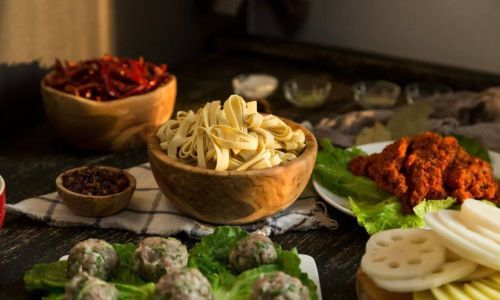
- Ingredients: 2 cubes fermented red tofu, 1 tbsp chili oil, 1 tsp sugar, 1 tsp sesame paste.
- Method: Mash the tofu with a fork, then blend with remaining ingredients. Top with crushed peanuts.
Advanced Flavor Combinations
The “Mala” Experience (Numbing Spice)
Sichuan’s signature mala flavor combines chili oil with Sichuan peppercorns for a tingling sensation.
- Recipe: 2 tbsp chili oil, 1 tsp ground Sichuan peppercorns, 1 tsp garlic powder, 1 tsp sugar.
- Pairing: Ideal with beef slices and tripe in a spicy broth.
Creamy Peanut Sauce
A Thai-inspired twist using peanut butter and coconut milk.
- Recipe: 2 tbsp peanut butter, 1 tbsp coconut milk, 1 tsp lime juice, 1 tsp fish sauce.
- Pairing: Perfect with shrimp and mushrooms in a tom yum broth.
Herbal Yogurt Sauce
A cooling option for summer hot pot sessions.
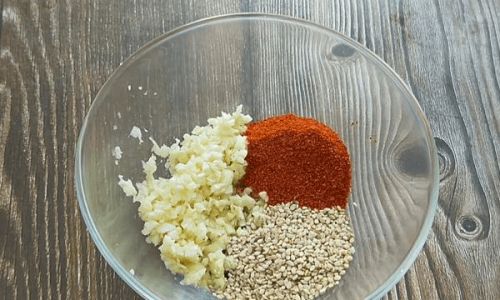
- Recipe: ½ cup Greek yogurt, 1 tbsp mint, 1 tsp dill, 1 tsp lemon zest.
- Pairing: Balances greasy meats like lamb in a clear broth.
Dietary Adaptations
- Vegan Options: Substitute fish sauce with soy sauce, and use nutritional yeast for cheesy notes.
- Gluten-Free: Use tamari instead of soy sauce and ensure chili oil is gluten-free.
- Low-Sodium: Reduce soy sauce by half and amplify flavor with citrus or herbs.
Pairing Sauces with Hot Pot Ingredients
The key to a memorable hot pot lies in harmonizing sauces with proteins and vegetables:
- Beef: Opt for sesame paste or chili oil to complement the meat’s richness.
- Seafood: Light soy-ginger sauce or herbal yogurt enhances delicate flavors.
- Tofu: Fermented bean paste or spicy mala adds depth to bland textures.
- Noodles: A drizzle of peanut sauce or vinegar-based dressing clings beautifully.
The Science of Flavor Balance
Achieving harmony in your sauce requires understanding flavor interactions:
- Sweet vs. Salty: A pinch of sugar can temper excessive saltiness.
- Spicy vs. Cooling: Coconut milk or yogurt soothes chili heat.
- Umami Boosters: Mushroom powder or tomato paste amplifies savory notes.
Common Mistakes to Avoid
- Over-seasoning: Taste as you go to prevent salt overload.
- Using Raw Garlic: Toasting garlic in oil mellows its sharpness.
- Ignoring Texture: A mix of creamy, crunchy, and chunky elements adds interest.
Cultural Significance and Modern Trends
Dipping sauces often carry cultural symbolism. In Japan, ponzu sauce (citrus soy) reflects a preference for clean flavors, while Korean ssamjang (fermented bean and chili paste) embodies the love for bold, fermented tastes. Modern fusion sauces, such as truffle-infused sesame or wasabi-lime yogurt, showcase evolving palates.
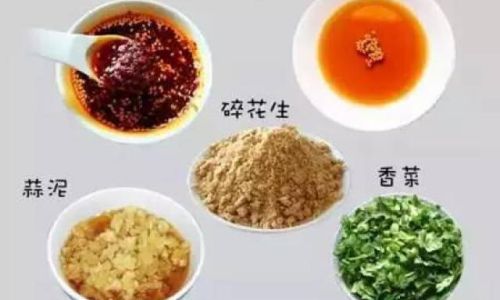
Conclusion: The Joy of Experimentation
The beauty of hot pot dipping sauces lies in their adaptability. Whether you adhere to tradition or invent bold new blends, the goal remains the same: to create a personalized flavor journey. So gather your ingredients, invite friends and family, and let your sauce bowl become a canvas for culinary creativity. After all, in the world of hot pot, every dip is a celebration of taste, tradition, and togetherness.
Word Count: 1,842

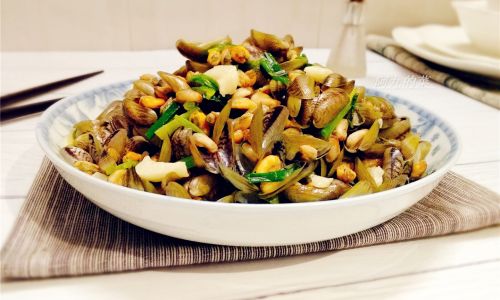
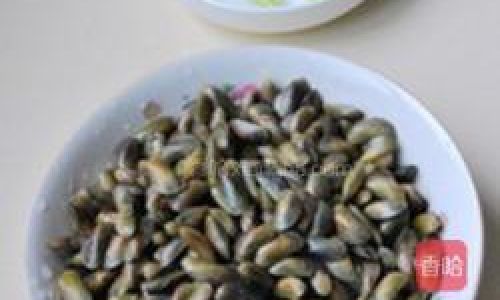


0 comments